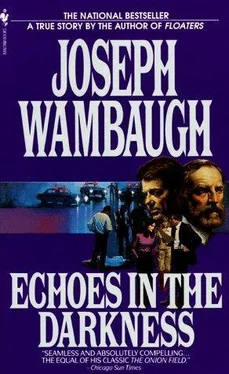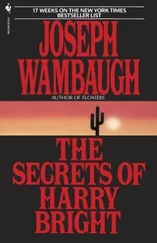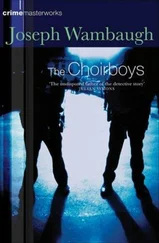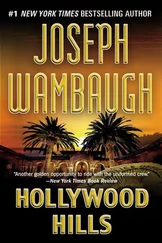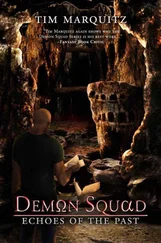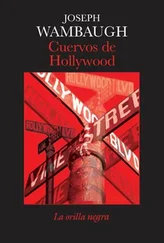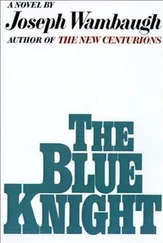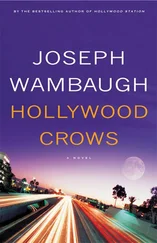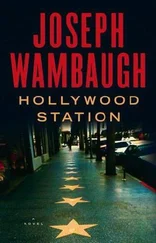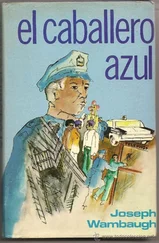Joseph Wambaugh - Echoes in the Darkness
Здесь есть возможность читать онлайн «Joseph Wambaugh - Echoes in the Darkness» весь текст электронной книги совершенно бесплатно (целиком полную версию без сокращений). В некоторых случаях можно слушать аудио, скачать через торрент в формате fb2 и присутствует краткое содержание. Жанр: Полицейский детектив, на английском языке. Описание произведения, (предисловие) а так же отзывы посетителей доступны на портале библиотеки ЛибКат.
- Название:Echoes in the Darkness
- Автор:
- Жанр:
- Год:неизвестен
- ISBN:нет данных
- Рейтинг книги:5 / 5. Голосов: 1
-
Избранное:Добавить в избранное
- Отзывы:
-
Ваша оценка:
- 100
- 1
- 2
- 3
- 4
- 5
Echoes in the Darkness: краткое содержание, описание и аннотация
Предлагаем к чтению аннотацию, описание, краткое содержание или предисловие (зависит от того, что написал сам автор книги «Echoes in the Darkness»). Если вы не нашли необходимую информацию о книге — напишите в комментариях, мы постараемся отыскать её.
Echoes in the Darkness — читать онлайн бесплатно полную книгу (весь текст) целиком
Ниже представлен текст книги, разбитый по страницам. Система сохранения места последней прочитанной страницы, позволяет с удобством читать онлайн бесплатно книгу «Echoes in the Darkness», без необходимости каждый раз заново искать на чём Вы остановились. Поставьте закладку, и сможете в любой момент перейти на страницу, на которой закончили чтение.
Интервал:
Закладка:
Joseph Wambaugh
Echoes in the Darkness
Gothic: a late 18th century and early 19th century style of fiction characterized by historical and picturesque settings, an atmosphere of mystery, gloom, and terror, supernatural or fantastic occurrences, and violent and macabre events.
— The Random House DictionaryI mate with my free kind upon the crags;
the hidden recesses
Have heard the echo of my heels,
in the cool light,
in the darkness.
— EZRA POUNDPrologue
There was always a taste for Gothic in the original colonies, particularly in that historic territory that lies west of Philadelphia, and east of Lancaster where Amish farmers still resist the 20th century.
Schoolchildren of the commonwealth of Pennsylvania are told that the springtime explosion of red, white and blue on the mournfully lovely countryside was caused by the sacrifice of Revolutionary dead. The tulip is blood -scarlet, the dogwood bone-white, the iris a visceral blue. Thus, the flora is a memorial to the patriots, or so the schoolmasters say.
The haunt of history is everywhere. “The Main Line” of the Philadelphia commuter train slashes east and west near the old battleground where soldiers wrote of corpse-eating wolves that could outhowl the wind. Local schoolchildren envision bloody footprints in the snow, and gaunt specters with ice-locked muskets, their feet wrapped in rags, led by General Washington who denied himself shelter so long as his starving soldiers had to sleep in the wilderness.
It’s a land of splendid trees. When William Penn arrived in 1682 he marveled at the trees: black walnut, cedar, ash, hickory, sassafras, beech. The oaks are formidable: red, white and black. Some trees, 250 years old, are local treasures. There are ancient buttonwoods, yellow pines, firs and red maples. And of course, there’s hemlock.
A great oak still stands that was used as a gibbet after the Battle of Brandywine where in 1777 Washington suffered a defeat. The wretched victims of the gibbet were spies, or so their executioners claimed. Their white dangling bodies turned iron-gray and then black against the colorless sky and parchment leaves of that hanging oak.
Not surprisingly, it’s a land of antiques and collectors. Tables in Main Line mansions and manor houses are often made of split slab, with round legs set in auger holes. Ancient nails of all kinds are treasured collectibles, some shaped like tiny piano mallets.
This was a land of forges and furnaces. Iron was always cherished. “There is an abidingness about iron,” a settler wrote, “and most things made from it.” It’s impossible not to feel this abidingness along The Main Line.
Youngsters from all over America come here to attend prestigious prep schools and academies. For higher learning there’s Swarthmore, Haverford, Villanova, Bryn Mawr and others, as well as several seminaries marked by split-rail or white-pine or iron gates, surrounded by native trees that turn bronze and fiery during Indian summer. The trees lie side by side with pretty autumn flowers whose names are sinister: red-hot poker, white snakeroot. It’s hard to miss the taste for Gothic.
One can be lulled by a sense of the “abidingness” on suburban roads, especially on cloudy days when vivid colors are muted, and cheerful light shines from a Georgian mansion, a French château, a colonial manor house. There’s something reassuring about the craft and labor that’s turned so many ancient carriage houses and barns and stables into enduring homes of brick, stone and cedar. But just past any turn in the road, there might be another kind of structure made of the local moss-green stone called serpentine. A slated spire or iron-gray vaulted arch might loom suddenly. It’ll only be a church or public meeting house or a distant manse, but the medieval stone undermines the pastoral in this heartland of Friends, as the English Quakers were called.
Perhaps the Gothic Revival was inspired by the mercenaries who brought the warrior arts. German professionals taught the citizen soldiers the value of cold steel at the end of a musket. Bloodied French veterans scoffed at tales of Lafayette’s gallantry. They massacred for money . In the early days native Indians were never certain whether they should murder for the invaders or risk being murdered by them. In the land of patriots and Friends there were always pitiless renegades. They were as medieval as serpentine stone.
But even with their taste for Gothic the locals were bewildered by the series of irrational and “evil” events that destroyed many lives and led to the most massive homicide investigation Pennsylvania had ever experienced.
1
“I wasn’t the first colleague to fall for Bill Bradfield, not by a long shot,” Sue Myers said. “He had a way. He was intense yet boyish. He was articulate and erudite but wasn’t afraid to show affection. He might suddenly just put his arm around your shoulder when he was talking ever so passionately about something as mundane as a lesson plan for advanced students. He was handsy, but it seemed so natural. Some people found it endearing.
“He dreamed of visiting the sacred places that T. S. Eliot and Ezra Pound visited when they toured Europe,” she remembered. “I never pretended to understand Pounds poetry. I attempted to read The Cantos , but I couldn’t decipher them. I thought Bill Bradfield was the most brilliant teacher I’d ever met. He was interested in art and music and literature. He was interested in everything. The students loved him, and pretty soon so did I.”
The newspapers never got her age right when they wrote about her. Sue Myers was older than reported. Born in May, 1940, she was seven years younger than William S. Bradfield, Jr.
Sue Myers met William Bradfield when she came to teach at Upper Merion Senior High School in the fall of 1963, and within a year they were lovers. But being the lover of Bill Bradfield had its drawbacks. Newspaper accounts in later years would refer to him as the “Rasputin” of Upper Merion, but if so, somebody must’ve misplaced the mad monk’s rampant glands. Sue Myers was a virgin when she began dating Bill Bradfield and thought for several months she might remain one.
“He never made me feel he was after a sexual fix,” she said. “We hardly did more than kiss for a long while.”
When she first dated him he wore a hand-me-down suit that had belonged to a dead uncle, yet on his wrist was a top-of-the-line Omega. When he was away from home he’d stay in places where at night the wallpaper wiggled and shimmied, yet once he ran out and bought seven pairs of Nettleton shoes because someone told them they were good. He kept Sue Myers so confused it was literally months before she thought she understood his marital status. And then she was wrong.
He was a whole lot of work, this teacher. She’d learn about him, but a little at a time.
One of the things she learned early was that Bill Bradfield was the only son of a retired corporate executive who owned a nice piece of land and a 19th-century farmhouse near Downingtown. His father had worked for Western Electric and had been transferred often in his career. Bill Bradfield told her that he’d been enrolled in thirteen different schools before entering Haverford College in the heart of The Main Line, considered part of the “Little Ivy League,” along with Colby and Amherst, and sister schools like Swarthmore and Bryn Mawr.
It was always painful for him to recall his boyhood relationship with his father. It seemed young Bill Bradfield could never perform any task well enough to suit an aggressive, overachieving businessman. One day the boy was determined to do an expert job of trimming the hedge in their yard. He dug a hole, and after measuring precisely, planted a pole at each end of the hedge to mark the desired height. Then he tied a string between the two pencil marks and trimmed the hedge as “flat as a table top.” He’d labored for hours, and when he was finished he nervously awaited his fathers judgment. The executive pointed out that his son had forgotten to take into consideration the terrain, which sloped twelve inches from one end of the hedge to the other. Put an egg on this table and you’d better like omelets.
Читать дальшеИнтервал:
Закладка:
Похожие книги на «Echoes in the Darkness»
Представляем Вашему вниманию похожие книги на «Echoes in the Darkness» списком для выбора. Мы отобрали схожую по названию и смыслу литературу в надежде предоставить читателям больше вариантов отыскать новые, интересные, ещё непрочитанные произведения.
Обсуждение, отзывы о книге «Echoes in the Darkness» и просто собственные мнения читателей. Оставьте ваши комментарии, напишите, что Вы думаете о произведении, его смысле или главных героях. Укажите что конкретно понравилось, а что нет, и почему Вы так считаете.
